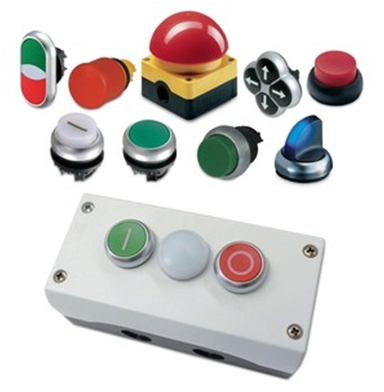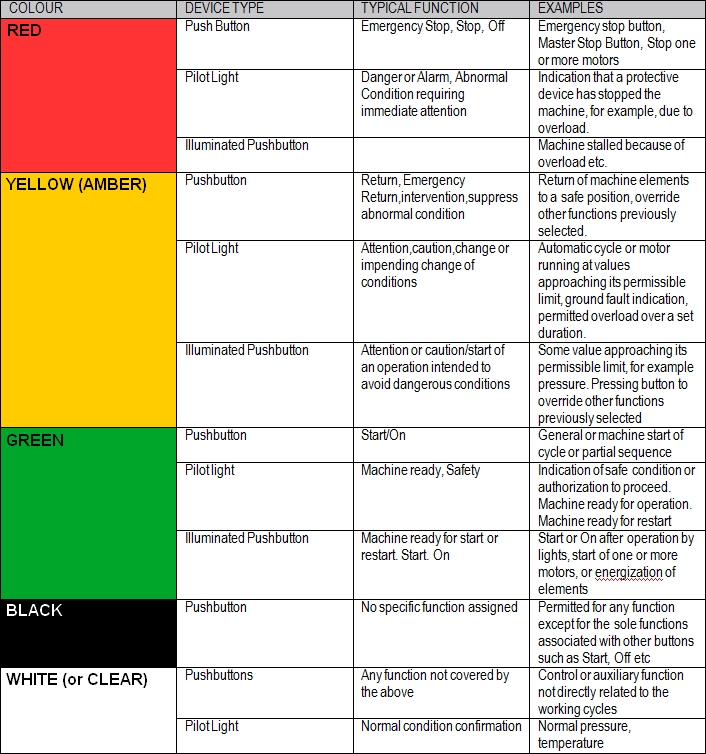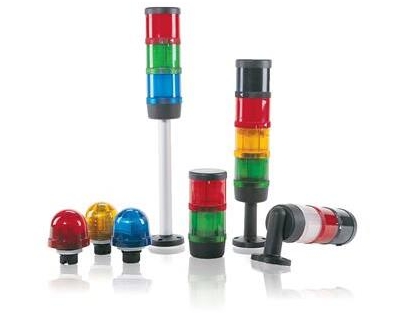Here’s an article by Martin M. about pilot and signalling devices (features, benefits, and applications).
You too can send us articles, all you need is to send a mail to the team.
Introduction
A typical industry and power system setup consist of different electronic equipment and machinery. When energized, the equipment performs varying functions that range from driving loads to power generation.
Considering the dangers associated with malfunctioning electrical equipment and machinery, there is a need for forewarning, as well as quick control devices to ensure personnel safety and reduced damage. This comes in the form of pilot and signalling devices.
The primary function of and pilot devices is to complete or break a circuit, control an operation and act as a primary notification module. The signalling devices on the other hand are primary equipment status notification modules.
Pilot Devices
Pilot devices consist of pushbuttons, selector switches, toggle switches and in some cases, stack lights. The primary function of pilot devices is monitoring, as it offers real-time machine status information, as well as process control for the operator.
It is important to note that the pilot devices are available in different sizes and shapes as per the functionality:
- Pushbuttons: operates electrical circuitry through depressing a button or knob. Usually returns to normal position for a reset, or complete shutdown.
- Selector switches: a multi-position switch that switches between different functions, modes of operations and ranges.
- Toggle switches: offers light duty switching of inductive and resistive loads. Also, offer secondary control for larger industrial switches. Consists of a simple toggle mechanism for ON and OFF function
- Stack lights: interacts with the various status signals to offer a visible notification of machine status.
Signalling Devices
A typical industrial signalling device consists of a combination of lights and audio. The combination provides ample signalling on the status of the equipment, machine, automated lines, and conveyors. For universal understanding and standardization of signals, different colours are used for different signals.
The standards include the following:
Click on the image to see a larger preview
Applications
It is important to note that different lights are used for different applications. For the installation engineer and technicians, this is especially important, as the signalling is usually application-specific. Considering that in most cases the event is an emergency, the device can greatly affect functionality.
Different applications call for different light colours, bulb type, mounting, and voltage. The available mounting options include pipe, surface, and magnetic mounts. The choice of mounting depends on surrounding equipment height considerations.
Light Choice
The following are the typical light choices for signalling devices:
- Strobe lights: utilises a strobe tube or LED lamp for bright rapid flashes. Primary benefit-highly visible. This makes them ideal for use at night or in foggy and smoky conditions. Low maintenance requirements
- Rotating flash: incandescent or halogen flashtubes. More visible in bright light conditions, such as direct sunlight. Visible over long distances and easier to notice due to longer lingering property
- LED stacked lamps: usually used to indicate status, rather than emergency signalling. Consist of differently coloured LED lamps, either blinking or constant ON mode to indicate equipment status.
As highlighted, the integrated lamp offers a primary signalling mode for pilot and signal devices. Thus emanates another matter, lamp selection. The typical lamps used include incandescent, neon and light emitting diodes (LEDs). However, the criterion to consider permeates across all the different types. They include the following:
- Longevity: this reduces the replacement requirements, thus further cutting on operation costs. On average, LEDs can last for about 10years, compared to 2 years for neon lamps and 3 months for regular incandescent lamps.
- Reduced power consumption: In an industry, the main equipment, including motors and other drives use up large amounts of power. The pilot and signalling devices should not significantly add on to this amount.
- Resistance to shocks and vibrations associated with industrial equipment. The pilot and signalling devices should maintain functional integrity in the face of regular shocks. In this regard, LEDs have a significant advantage over incandescent lamps. LEDs are solid state, while the incandescent lamps consist of filaments that easily disintegrate when faced with shocks and vibrations.
- Low operating temperatures for longevity, efficiency and functionality
- Aesthetic appeal
- Standardized components for easy repair and replacement.
What’s your opinion on that article?



